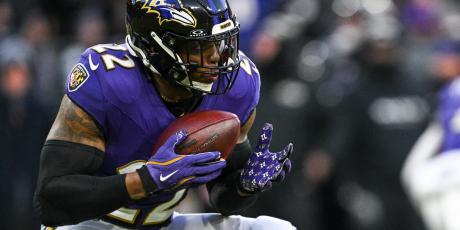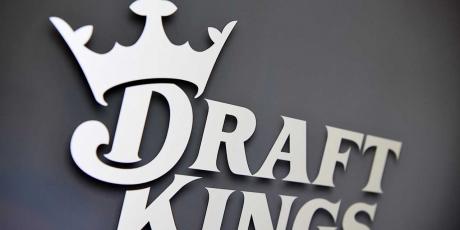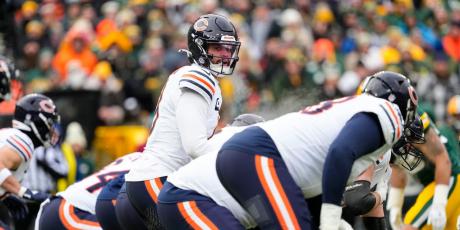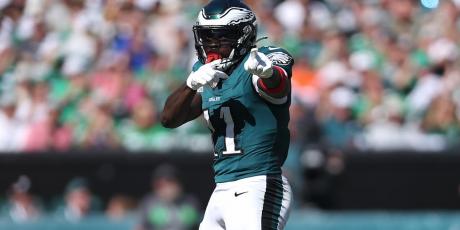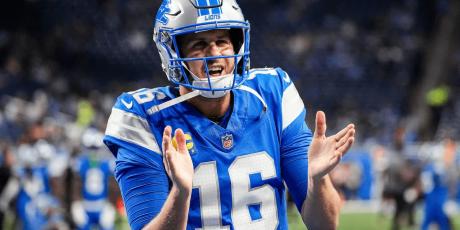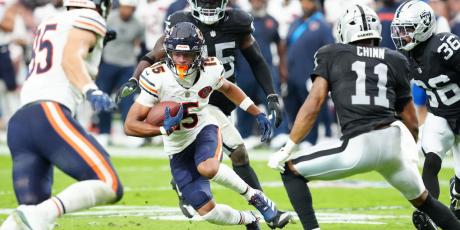3 Key Fantasy-Relevant Tendencies of Each NFL Offensive Coordinator

Below is a data-driven overview of how the tendencies of each offensive coaching staff will affect the 2016 fantasy season, largely based on my research on how coaching impacts fantasy football.
Here are the takeaways from that article:
- A team's play-calling and player usage tendencies (defined here) from the previous season were useful predictors for the current season as long as the team had the same play-caller -- when a team changed their play-caller, their tendencies from the previous season weren't as reliable.
- Coaching tendencies were not highly correlated from one team to the next (except for red zone pass/run ratio).
Note: The primary play-caller is denoted with an asterisk (*).
Jump To: ARI | ATL | BAL | BUF | CAR | CHI | CIN | CLE | DAL | DEN | DET | GB | HOU | IND | JAC | KC | LA | MIA | MIN | NE | NO | NYG | NYJ | OAK | PHI | PIT | SD | SF | SEA | TB | TEN | WAS
Arizona Cardinals -- HC: Bruce Arians* (4th year), OC: Harold Goodwin (4th year)
-
Deep targets are the most valuable kind in fantasy, and Arians runs a vertical scheme. Arizona's 24.2% deep attempt percentage ranked second in the NFL, and Michael Floyd and John Brown were part of a select group of receivers that got targeted deep more than one-third of the time. Arizona also ranked second in deep attempt percentage in 2014 despite Carson Palmer missing 10 starts.
-
Tight ends are hardly involved in the Arians passing attack; Arizona's 14.9% tight end target percentage in three years under Arians is 28% below league average. He's yet to have a tight end finish higher than 28th in PPR scoring (and you shouldn't bet on Jermaine Gresham or Darren Fells bucking that trend in 2016).
-
David Johnson is the only running back that Arians has treated like a bell cow. Arians gave a back 20 touches in 33% of games until Johnson took over, when that figure rose to 60%.
Atlanta Falcons -- HC: Dan Quinn (2nd year), OC: Kyle Shanahan* (2nd year)
-
Shanahan's offense emphasizes the "X" receiver, so don't think Julio Jones' league-leading 203 targets were a fluke. For three years and counting, a Shanahan offense has had a wide receiver with a top-10 finish in targets per game (Julio Jones, 2015; Josh Gordon, 2014; Pierre Garcon, 2013). Shanahan has had a legitimate 10-target-per-game wide receiver in four of his eight seasons, and in those seasons the WR1 out-targeted the WR2 31% to 14% on average -- not great news for Mohamed Sanu.
-
We knew Shanahan loved Devonta Freeman before the season, and Atlanta went on to have a 20-touch back 12 times (11 of which were Freeman).
-
Another good sign for Freeman is that Shanahan tends to favor the run in the red zone; his teams have ranked first and seventh in red zone rushing percentage in 2014 and 2015, respectively.
Baltimore Ravens -- HC: John Harbaugh (9th year), OC: Marc Trestman* (2nd year). Update: Marty Mornhinweg* replaced Marc Trestman in Week 6.
-
Trestman's offenses have ranked in the top-half of the league in pass attempts in each of his 10 seasons as a play-caller (Baltimore led the league with 676 in 2015). The issue is, they may spread the ball around. Steve Smith Sr. topped out at just a 23% target market share as the team's WR1 before he went down, at which point Kamar Aiken stepped in and also received a 23% share. Smith and Aiken return, while Mike Wallace, Breshad Perriman (coming off a missed rookie season due to injury), and Ben Watson have been added to the crowded mix.
-
Trestman isn't afraid to throw in the red zone, either; he's had two straight top-10 finishes in red zone pass percentage with two different teams over the last two years. The main beneficiary could be Watson, who Baltimore went out and signed despite having options already on the roster. In the red zone, Watson led New Orleans in targets (18) and touchdowns (6) in 2015.
-
Update: Watson has torn his achilles and will miss the entire 2016 season.
-
Trestman has had a 20-touch back in 58% of his games over last three seasons (the NFL average is 37.8%). Justin Forsett and Javorius Allen both carried the load at different times, but it remains to be seen what happens now that both are healthy.
-
Update: Mornhinweg is expected to commit more ot the running game and take more deep shots.
Buffalo Bills -- HC: Rex Ryan (2nd year), OC: Greg Roman* (2nd year). Update: Anthony Lynn replaced Roman in Week 3.
-
Roman uses play-action to set up the deep ball, leading Buffalo to a fifth-ranked finish in deep attempt percentage (23.5%).
-
None of Roman's offenses have ever finished worse than ninth in rushing attempts in any his five seasons as a coordinator. His teams have finished in the top three in red zone rushing percentage for the last three seasons in a row. In fact, no Buffalo receiver had more than seven red zone targets in 2015; Sammy Watkins will still get his, but it'll be difficult for Buffalo to support a second receiver in fantasy.
-
Roman's teams averaged 6.5 quarterback rushes per game from 2012 to 2015 -- good for a top-four finish each year. Molding an offense around a mobile quarterback like Tyrod Taylor is something Roman has experience with from his days with Colin Kapernick in San Francisco.
-
Update: The Bills offensive identity remains largely unchanged under Lynn, but Lynn's arrival correlates with increased effectiveness with LeSean McCoy. As of Week 7, McCoy had averaged 117.5 rushing yards in four games under Lynn after averaging just 58.5 in two games under Roman in 2016.
Carolina Panthers -- HC: Ron Rivera (6th year), OC: Mike Shula* (4th year)
-
Carolina has never ranked below eighth in rushing attempts under Shula (and ranked first last season). They've been a top-five team in red zone rushing percentage in all three years with Shula running the offense.
-
No coach has robbed his halfbacks of goal-line carries more than Shula; quarterbacks and fullbacks have combined to account for 60% of the team's carries inside the 5 since Shula was hired.
-
Jonathan Stewart had 20 or more touches in nine of 13 games last season. That coincided with DeAngelo Williams finally being out of the picture -- Carolina had a 20-touch back only seven times in 2013 and 2014 combined.
Chicago Bears -- HC: John Fox (2nd year), OC: Dowell Loggains* (replaces Adam Gase)
-
Loggains is expected to run a similar system to what Adam Gase ran last season, where Chicago aimed to limit mistakes and shorten games. They were 27th in situation-neutral seconds between plays (31.74), as well as 25th in passing play percentage (54.3%).
-
The only other time Loggains coordinated an offense was in 2013 with Tennessee. They were 27th in red zone pass percentage that year, although Chicago was 14th with Loggains on Gase's staff in 2015. Alshon Jeffery is likely to hog the red zone targets either way, but a conservative approach could hurt the other receivers' fantasy value.
-
Chicago had a 20-touch back a healthy 56% of the time a year ago, the same rate Loggains had at his last job. Jeremy Langford averaged 21.3 touches per game when Matt Forte was out and will enter camp as the starter.
Cincinnati Bengals -- HC: Marvin Lewis (14th year), OC: Ken Zampese* (replaces Hue Jackson)
-
Zampese has served as team’s quarterbacks coach since 2003 and isn't expected to change the offense much. They throw effectively because of their receiving talent, but this is not a high-volume passing attack; Cincinnati was 26th in passing play percentage (53.5%) in 2015.
-
The Bengals have been in the top four in red zone rushing percentage for each of the past two seasons. Both Jeremy Hill (44) and Giovani Bernard (38) finished in the top 12 in red zone touches last season.
-
Two-back sets and double-tight sets have become of staple of the offense. That approach could ultimately cap the target upside of either Tyler Boyd or Brandon LaFell -- whoever loses out in the battle for WR2 duties.
Cleveland Browns -- HC/OC: Hue Jackson* (replaces Mike Pettine)
-
Jackson comes over from Cincinnati as a well-regarded offensive mind and will call the plays in Cleveland. Last year's offensive coordinator, John DeFilippo, passed more than Jackson (Cincinnati was 27th in passing play percentage at 53.5% while DiFilippo was eighth at 61.8%), but Jackson threw deep more (21.6%, eighth; 15.4%, 26th).
-
Like old coordinator DeFilippo, Jackson will tend to feature multiple running backs; Jackson had a 20-touch back only four times in 2015,; DiFilippo had just one. Jackson talked up both Isaiah Crowell and Duke Johnson this offseason.
-
Per 4for4's John Paulsen, Jeremy Hill out-touched Giovani Bernard, 26% to 22%, in situations where Cincinnati wasn’t trailing by three or more. In all other situations, touches were split evenly (14%). Cleveland’s league-low Vegas win total implies that they’ll be trailing a lot more than 12-4 Cincinnati did in 2015, in which case Johnson stands to benefit -- he’s the Gio of this offense.
Dallas Cowboys -- HC: Jason Garrett (7th year), OC: Scott Linehan* (3rd year)
-
Despite a run-based philosophy intent on hiding Dallas' lackluster defense, Linehan and Garrett’s offense was third in red zone pass percentage (65.8%) in 2015. Chalk it up to playing with a ton of deficits in the absence of Tony Romo -- Dallas was 22nd in 2014 (50.8%).
-
Dallas gave a back 20 or more touches in six games in 2015 after doing so in every game in 2014. The Cowboys drafted Ezekiel Elliott at No. 4 overall to get back to their 2014 ways.
-
Garrett and Linehan want to use Elliott to shorten the game. Dallas let the second-most time elapse between plays in neutral situations (32.95), and that's likely to continue into 2016.
Denver Broncos -- HC: Gary Kubiak* (2nd year), OC: Rick Dennison (2nd year)
-
In the wake of old Kubiak-favorite Owen Daniels being washed up, the offense now relies heavily on its top two wide receivers, Demaryius Thomas and Emmanuel Sanders. They combined to average 19.6 targets per game (52% market share), while all other wide receivers combined to average 5.6 (15%).
-
At one point in his career, Kubiak favored the tight end in the passing game. But Denver’s tight end target percentage (19.9%) was below-average in 2015. That'll happen when you employ a 33-year-old Daniels and a 31-year-old Vernon Davis. Daniels and Davis are gone, and in their place is another Kubiak retread, Garrett Graham.
-
Denver had a 20-touch back only three times in 2015, and all three times it was Ronnie Hillman, not C.J. Anderson. However, Kubiak’s teams did have a 20-touch back in 47% of his games between 2013 and 2014. Anderson’s contract suggests they like him, but he’s been constantly banged up and doesn’t play well hurt.
Detroit Lions -- HC: Jim Caldwell (2nd year), OC: Jim Bob Cooter* (2nd year)
-
Detroit dropped from first to 11th in passing play percentage after Cooter took over in Week 8. They also dropped from first to ninth in red zone pass percentage. Golden Tate received a team-leading 30% of red zone targets once Cooter was promoted, after getting just 12% before. Tate was especially effective on quick-twitch routes around the goal-line, although the single coverage might not be there with Calvin Johnson now retired.
-
Cooter has worked to rein in Matthew Stafford; Detroit ranked just 31st in deep attempt percentage. The approach worked -- Stafford was the QB7 after Cooter took over, although, again, that was with Johnson in the mix drawing double teams.
-
Cooter targeted his running backs 29% of the time, which would have ranked first over a full season. Theo Riddick's role in the passing game essentially forces the team into a committee approach -- their backs didn’t even have one 20-touch game in 2015.
Green Bay Packers -- HC: Mike McCarthy* (11th year), OC: Edgar Bennett (2nd year)
-
McCarthy has shown an increasing willingness to go away from Eddie Lacy. With Lacy eating more off the field than on it, Green Bay had a 20-touch back just 31% of the time over the last two seasons, after they had one 69% of the time in Lacy’s 2013 rookie season. Lacy’s touchdown production fell off a cliff (five last year after 24 combined in the two years before that) as Green Bay passed more than any other team in the red zone (69.4%) in 2015, but his apparent weight-loss could precede a return to more balanced tendencies.
-
McCarthy’s offense is not as vertical as you might think. Green Bay was 20th in deep attempt percentage last year without Jordy Nelson, but threw deep even less when he was in the lineup in both 2013 and 2014.
-
McCarthy retook play-calling duties from Tom Clements in Week 14, but Green Bay's tendencies didn’t change up. Both Randall Cobb and Davante Adams regressed in 2015, and McCarthy was criticized for not scheming his receivers open more given their struggles with man coverage. It remains to be seen if Nelson will be the cure, or if McCarthy will have to alter his approach.
Houston Texans -- HC: Bill O’Brien* (3rd year), OC: George Godsey (2nd year)
-
O'Brien’s had a 20-touch back in 59% of the games he’s coached with Houston. Lamar Miller wouldn't have signed if he wasn't promised a big workload after being criminally underused in Miami.
-
O'Brien's system gives quarterbacks a lot of responsibility and has a complex pre-snap audible system. Perhaps that's why they went after Brock Osweiler so aggressively in free agency; Osweiler, of course, sat behind the greatest pre-snap quarterback ever.
-
It's not quite on Chan Gailey 2015 levels, but Houston has targeted tight ends just 11.8% of the time under O’Brien -- barely half as much as the average team. That means more of the pie is available for Miller, DeAndre Hopkins (192 targets in 2015), and potentially other wide receivers like first-rounder Will Fuller.
Indianapolis Colts -- HC: Chuck Pagano (5th year), OC: Rob Chudzinski* (2nd year)
-
Indianapolis spread the ball around in the red zone more once Chudzinski took over in Week 9, with no receiver drawing more than 16% of the team's red zone targets. T.Y. Hilton suffered the most -- he saw 28% before Hamilton was canned.
-
Chud targeted the tight end in the red zone 16% of the time, which is far lower than Hamilton's 29% rate since 2013. But it’s possible that tendency is less Hamilton’s and more Andrew Luck’s; Chud only had Luck for one game before Luck went down with a lacerated kidney. Luck has thrown 30 of his 101 career touchdowns to tight ends (30%).
-
Chud gave a borderline-ancient Frank Gore 20 or more touches only four times in 2015, and Indianapolis has had a 20-touch back in only 21% of games under Pagano since 2013. The Colts ran just 277 plays with a lead in 2015 after running 598 such plays in 2014, so it’s possible Gore can eke out more game-script induced volume if Luck returns to form.
Jacksonville Jaguars -- HC: Gus Bradley (4th year), OC: Greg Olson* (2nd year)
-
Jacksonville was third in deep attempt percentage (24.1%). Allen Robinson led the NFL in deep targets (67). This is a good offense. After presiding over an excellent rookie season by Derek Carr in Oakland, Olson’s first year in Jacksonville coincided with a big second year leap for Blake Bortles.
-
Olson never seemed to fully trust his T.J Yeldon-led backfield near the goal line last season. Jacksonville’s running backs handled just 39% of team touches inside the opponent’s 5-yard line. The lack of confidence in Yeldon was made apparent by the Chris Ivory signing.
-
Even though Jacksonville ranked fourth in red zone pass percentage (65.8%), running backs scoring only three of the offense’s 40 touchdowns is absurd. That will likely regress to the mean no matter what, and Ivory -- the likely new goal-line back -- will be the prime beneficiary.
Kansas City Chiefs -- HC: Andy Reid* (4th year), OC: Brad Childress (replaces Doug Pederson)
-
This is Reid's offense, and it's slow and conservative. Kansas City ranked 30th or below in pace for two years in a row. They’ve also been outside of the top 20 in passing play percentage in all three seasons under Reid.
-
Just call Alex Smith Mister Short of the Sticks. Reid's offense was last in deep attempt percentage (12.9%), with 20 fewer deep passes thrown than any other team.
-
Amidst Jamal Charles missing the final 11 games last season, Reid had a 20-touch back 38% of the time, which is about league average. But that figure was 56% from 2013 to 2014 with Charles mostly healthy.
Los Angeles Rams -- HC: Jeff Fisher (5th year), OC: Rob Boras* (2nd year)
- A Fisher offense aims to shorten the game and play a moderately middling brand of mediocre football en route to a 7-9 record. Kidding but not kidding. The Rams have finished 26th or lower in pace in every season under Fisher.
- Boras took over in Week 14, and the Rams scored 7.0 points per game more after his promotion (22.8 to 15.8). They managed that while passing a laughably timid 45.6% of the time. That almost certainly has to increase after they drafted quarterback Jared Goff No. 1 overall, then spent four of their next five picks at wide receiver and tight end.
- Todd Gurley was fed 20 or more touches in eight of his 12 starts (67%), which is right on par with Fisher’s 64% rate going back to 1997.
Miami Dolphins -- HC: Adam Gase* (replaces Dan Campbell), OC: Clyde Christenson (replaces Zac Taylor)
-
The hope is Gase can have a positive impact on Ryan Tannehill. Miami's new head honcho oversaw career-best seasons from Jay Cutler in passer rating (92.3) in 2015 and Peyton Manning in yards (5,477), touchdowns (55), and interception percentage (1.5) in 2013. Gase likes to use the run to set up the play-action. Speaking of the run...
-
Gase’s offenses have ranked between 6th and 11th in rushing attempts in each of his three seasons as a play-caller -- there is hope yet for you Jay Ajayi truthers. A back has handled 20 touches in 50% of Gase's career games. Third-rounder Kenyan Drake isn’t a threat to early-down work, but it remains to be seen exactly how backfield touches will shake out.
-
Gase has always had a dominant "X" receiver that he's fed the rock to (he's targeted his WR1 more than 30% of the time each of the past two seasons). DeVante Parker would be the "X" for Miami, and 4for4's TJ Hernandez notes that Parker's closest comp is A.J. Green.
Minnesota Vikings -- HC: Mike Zimmer (3rd year), OC: Norv Turner* (3rd year)
-
Turner has built his offense around minimizing Teddy Bridgewater's arm strength limitations. They attempted the second-fewest deep passes in the NFL in 2015 (81).
-
Not surprisingly, Turner had a 20-touch back in 75% of games with Adrian Peterson back -- up from 31% in 2014 with Peterson out the last 15 games.
-
Turner elected to rush 58.6% of the time in the red zone in 2015, second in the league; it had something to do with that Peterson fella.
New England Patriots -- HC: Bill Belichick (17th year), OC: Josh McDaniels* (5th year)
-
McDaniels calls the plays on game day, but Belichick, of course, is majorly involved. Their game plans are extremely opponent-specific, but they generally run an up-tempo, pass-happy attack. They had the eighth-highest passing play percentage (65.3%) and averaged the second-fewest seconds between plays (28.24).
-
Belichick is willing to completely abandon the run against what he perceive to be a strong run defense. Their pass/run ratio was 59/15 in Week 2 against (what was thought to be) a strong Buffalo run defense, and was 54/9 in Week 7 against the Jets, who were second in yards per rush allowed at the time (3.44).
-
New England had a 20-touch back just twice in 2015 and in only 23% of games over the past three seasons. They’ll utilize different backs depending on situation and opponent. A “big back” will be heavily involved against weaker fronts, otherwise a shiftier passing down back who can line up out wide will be used. Dion Lewis played the latter role and was more valuable than LeGarrette Blount in fantasy, even though Blount averaged more touches per game, 14.3 to 12.1. It’s also worth noting that Belichick has been known to bench guys for fumbling, although that tends to apply more to the big backs.
New Orleans Saints -- HC: Sean Payton* (10th year), OC: Pete Carmichael (8th year)
-
Payton's offense is pass-heavy with an above-average pace, but they've been throwing less in the red zone as Drew Brees has aged. Their red zone pass percentage dropped from seventh in 2013 to 25th last season.
-
Once the team reached the red zone, they targeted wide receivers only 38% of the time. Perhaps that's why they went with 6-foot-3 Michael Thomas out of Ohio State in the second round. They also need to replace Ben Watson’s team-leading 18 red zone targets from a year ago, which was eight more than anyone else on the team. Speaking of tight ends, the Saints traded away Jimmy Graham and still went on to target tight ends at above-league-average rate. Payton relies on Drew Brees to work through his progressions and hit the open man -- Fleener was paid $18 million this offseason to be that open man.
-
Since 2014, Payton has allowed running backs to reach 20 touches 41% of the time. From 2007 to 2013, it was 28%. However, three Tim Hightower 20-touch games near the end of 2015 (when he was the last man in the backfield standing) may have inflated that total. Mark Ingram balled when healthy last season, but Payton may be reluctant to continue feeding him; Ingram hasn’t played in more than 13 games since 2012.
New York Giants -- HC: Ben McAdoo* (replaces Tom Coughlin), OC: Mike Sullivan (replaces McAdoo)
-
The Giants went with continuity, choosing to promote the 38-year-old McAdoo from offensive coordinator. McAdoo favors three and five-step drops in his quick-hitting short passing attack; the Giants have ranked 20th or lower in deep attempt percentage in both seasons under McAdoo.
-
Just because McAdoo’s offense favors short passes doesn’t mean he isn’t aggressive. The Giants were a healthy second red zone pass percentage in 2015 (66.7%) and a not-too-shabby 13th in 2014 (57.8%).
-
The Giants routinely used a committee approach at running back in 2015 (two 20-touch games), but were more of a one-man show in 2014 (nine). However, 2014 was before the Shane Vereen signing. Vereen will be the team’s seventh-highest-paid player in 2016, so it’s unlikely they cut his role in favor of a workhorse.
New York Jets -- HC: Todd Bowles (2nd year), OC: Chan Gailey* (2nd year)
-
The tight end is a leper in Gailey's passing attack; he'd rather line up in four wide. Jets tight ends had eight catches in 2015. All season.
-
On the other hand, 75% of the passes went to wide receivers -- Brandon Marshall and Eric Decker accounted for over half of the team’s targets. However, a dip in pass play volume could be on the horizon if Ryan Fitzpatrick isn't re-signed and the Jets are forced to trot out a lesser option like Geno Smith.
-
Bowles says Matt Forte is a three-down guy, but will Gailey feed the 30-year-old? Or does the $11.5 million they gave to Bilal Powell signal a committee approach is on the horizon? In Buffalo, Gailey’s backs had an above-average rate of 20-touch games during the Fred Jackson/C.J. Spiller era. But Powell played 47% of snaps for New York when he was active last season. He averaged 5.7 targets per game, including 7.3 over the last six.
Oakland Raiders -- HC: Jack Del Rio (2nd year), OC: Bill Musgrave* (2nd year)
-
Amari Cooper and Michael Crabtree were responsible for 45.8% of team targets under Musgrave, who generally plays to his team’s strengths.
-
Musgrave had a back go for 20 or more touches six times in 2015. However, there has been talk of reducing lead back Latavius Murray’s workload in 2016.
-
Musgrave has some vulturous fullbacks -- they siphoned away 3.2 targets and 2.1 carries per game in 2015, plus 14% of the team’s total plays inside the opponent’s 10. This will likely persist as long as Marcel Reece is on the roster.
Philadelphia Eagles -- HC: Doug Pederson* (replaces Chip Kelly), OC: Frank Reich (replaces Pat Shurmer)
-
Philadelphia can expect a reduction in play volume in the wake of Chip Kelly's departure. Kelly's Eagles averaged the shortest time between plays in neutral situations, while Pederson's Chiefs averaged the longest. Pederson will bring back the west coast scheme of his last boss and Kelly’s predecessor, Andy Reid.
-
Pederson doesn't favor the run in the red zone as much as Chip Kelly did. Pederson’s team ran 46.2% of the time in the red zone from 2013 to 2015, while Kelly’s ran it on 50.7% of the plays during that span.
-
Both Pederson's and Reich's offenses were in the top 10 in running back target percentage last season. That's likely to continue as long as Darren Sproles is on the Eagles' roster (though they may have drafted his replacement in fifth-rounder Wendell Smallwood out of West Virginia).
Pittsburgh Steelers -- HC: Mike Tomlin (10th year), OC: Todd Haley* (5th year)
-
Haley’s offense has gotten progressively more pass-happy over the years. Last year’s 61.6% passing play percentage was only 13th in the league, but that’s Pittsburgh’s highest ever under Haley. When you remove Ben Roethlisberger’s four missed games, that figure rises to 64.7%, which would have ranked fourth. Even with Big Ben missing time, Pittsburgh was tops in the league in deep attempt percentage. They also continued to be below-average in terms of tight end target percentage. But Martavis Bryant's year-long suspension and the signing of Ladarius Green could change that.
-
This is a coaching staff that lets the lead back carry the mail; Pittsburgh has had a 20-touch back in a whopping 71% of games from 2013 to 2015. Even Fitzgerald Toussaint got a 20-touch game last year -- in the playoffs, no less.
-
Haley attempted a 2-point conversion 24% of the time in 2015, which of course takes scoring opportunities away from the kicker. But Pittsburgh also led the league in field goal attempts (42) and finished in the top five in kicker fantasy scoring.
San Diego Chargers -- HC: Mike McCoy (4th year), OC: Ken Whisenhunt* (replaces Frank Reich)
-
This is Whisenhunt’s second stint with the team after being their offensive coordinator in 2013, which was McCoy’s first season here. That year, they installed the quick-hitting passing attack that revitalized Philip Rivers’s career -- his best three career marks in completion percentage have all come in the last three years. Given the scheme, San Diego’s 29th-place ranking in deep pass percentage is to be expected. They signed Travis Benjamin to take over the vertical role vacated by Malcom Floyd, but Floyd’s 11% target market share is a sobering reminder that the vertical game is not what McCoy and Whisenhunt are really all about. Unlike Floyd, however, Benjamin can be used on quick-hitting plays such as screens.
-
Rivers is trusted by McCoy and Whiz to make good decisions in the red zone. The offense ranked fifth in red zone pass percentage (65.0%) in 2015, and has been top 11 in each of last three seasons.
-
A San Diego back reached 20 touches in a game only three times last season. Since McCoy’s arrival, their rate of 20-touch games (31%) has been below average. You know that’s because of Danny Woodhead, who easily led the team in both carries (9) and targets (8) inside the opponent’s 10. Woodhead got 40% of the team’s carries plus targets inside the 10, including 68% of all running back carries plus targets.
San Francisco 49ers -- HC: Chip Kelly* (replaces Jim Tomsula), OC: Curtis Modkins (replaces Geep Chryst)
-
The one thing you can bank on with Kelly is an up-tempo offense. Even though San Francisco did play at the fifth-fastest pace in neutral situations (28.57 seconds between plays), Kelly’s Eagles played 4.6 seconds per play faster (23.94). In fact, the 4.3-second gap between Philadelphia and the second-fastest team was larger than the gap between the second-fastest team and the 29th-fastest team.
-
Quarterbacks tend to see both their yards per attempt and completion percentage spike under Kelly. However, Kelly is by no means a pass-happy coach; the highest red zone pass percentage his teams have ever had still ranked only 23rd in the league.
-
Kelly's zone blocking scheme will be a welcome addition to a line that finished dead last in adjusted line yards (3.16). Carlos Hyde managed only 3.39 yards/carry over his last six games and stands to benefit from Kelly's arrival. Kelly gave a back 20 touches 44% of the time last season -- nearly identical to Hyde’s rate through seven games (43%).
Seattle Seahawks -- HC: Pete Carroll (7th year), OC: Darrell Bevell* (6th year)
-
It might have seemed like Seattle became a pass-first team once Marshawn Lynch went down, but the numbers don't bear that out. They passed only 50.1% of the time with Beastmode out, which would have ranked 31st in the league. Same story in the red zone; their 46.8% pass percentage there would have also ranked 31st.
- Bevell’s had a 20-touch running back in 62.5% of his career games with Seattle. I know you’re thinking “duh because Lynch”, and Lynch had a lot to do with that, sure -- but this is still a smashmouth offense. That bodes well for Thomas Rawls, who averaged 23.4 touches per game in the five games he started and finished with Lynch out.
- Seattle’s best offense is often its defense. Since Wilson was drafted in 2012, the offense has never ranked higher than 26th in the league in pace -- you don't need to speed games up when you win 72% of them (Seattle is 46-18 since 2012).
Tampa Bay Buccaneers -- HC: Dirk Koetter* (replaces Lovie Smith), OC: Todd Monken (replaces Koetter)
-
Koetter coordinated the offense last year, so things should remain relatively consistent. He presided over a run-heavy outfit that ranked just 24th in passing play percentage during Jameis Winston's rookie affair. Koetter would prefer to set up the deep ball with play-action -- Tampa Bay was sixth in deep attempt percentage in (23.2%) in 2015.
-
The offense's tight end target percentage rose from 18.6% to 24.6% during the seven games in which Austin Seferian-Jenkins was active. That’s not a fluke -- Koetter offenses have featured the tight end in his stops in Jacksonville (Marcedes Lewis) and Atlanta (Tony Gonzalez).
-
Doug Martin handled 20 touches nine times for Koetter in 2015, but Koetter will also involve third-down back Charles Sims. Sims played on 42% of the snaps and received 4.4 targets/game in 2015.
Tennessee Titans -- HC: Mike Mularkey (2nd year), OC: Terry Robiskie* (replaces Jason Michael)
-
You can be sure that Mularkey, who took over in Week 9 last season, is going to run the ball. Robiskie's on board, too: in six years of coordinating, his teams averaged a rank of 10 spots higher in rushing attempts than in pass attempts. Tennessee made the decision to trade for a $25 million running back who may have peaked already in DeMarco Murray, but an under-center scheme where Murray isn't forced to take shotgun handoffs (his career yard per carry average is 4.8 under center, 4.2 in the 'gun) and run laterally could prove rejuvenating for his career. Tennessee also made the decision to spend a Day 2 pick on another running back, Heisman winner Derrick Henry. The moves fit the scheme, but don't necessarily sit well in the analytics community. Mularkey’s view on analytics? “It can be too much.”
-
Mularkey had just one back hit 20 touches in his nine games last year, probably because his backfield wasn’t good at football. Murray initially looked like a sure workhorse, but now his usage may be capped with Henry in the mix. Update: Any usage Murray loses in the running game should be made up for in the passing game, as the team cut supposed third-down back Dexter McCluster in the preseason.
-
Mularkey has also talked of more designed runs (surprise) for Marcus Mariota this season. Mularkey admitted that Mariota struggled to call plays in the huddle last season, so it’s possible Mariota makes a second-year leap.
Washington Redskins -- HC: Jay Gruden* (3rd year), OC: Sean McVay (3rd year)
-
Gruden's offense is balanced -- they passed 58.7% of the time (19th in NFL), and both their deep attempt percentage and red zone pass percentage were close to league average. In Kirk Cousins, Gruden has a quarterback dedicated to studying the nuances of the offense, which allowed him to post a league-best 69.8% completion rate in 2015.
-
The protection scheme under new offensive line coach Bill Callahan last year helped the Redskins go from 31st in sack percentage (9.6%) in 2014 to fifth (4.6%) in 2015.
-
Gruden’s had a 20-touch back in 38% of his games with Washington so far. Second-year man Matt Jones is the only 20-touch candidate currently on the roster.
Editor's note: Early bird rates for 4for4's Premium and DFS Subscriptions are available here.

